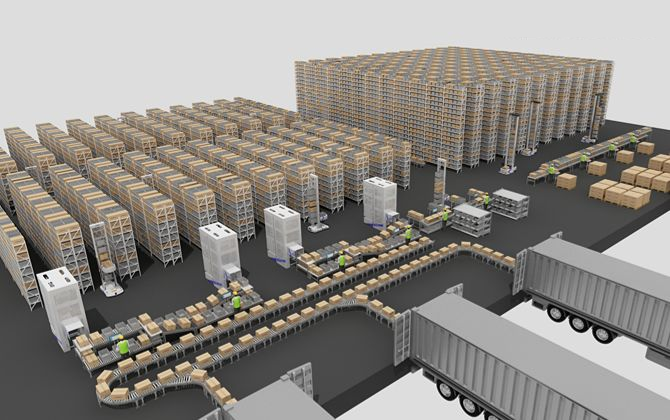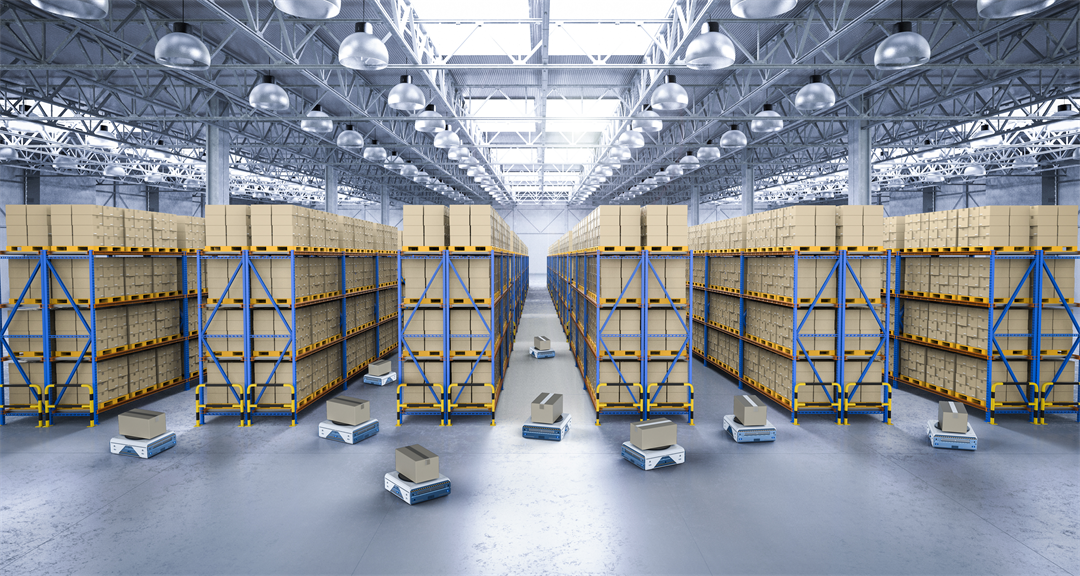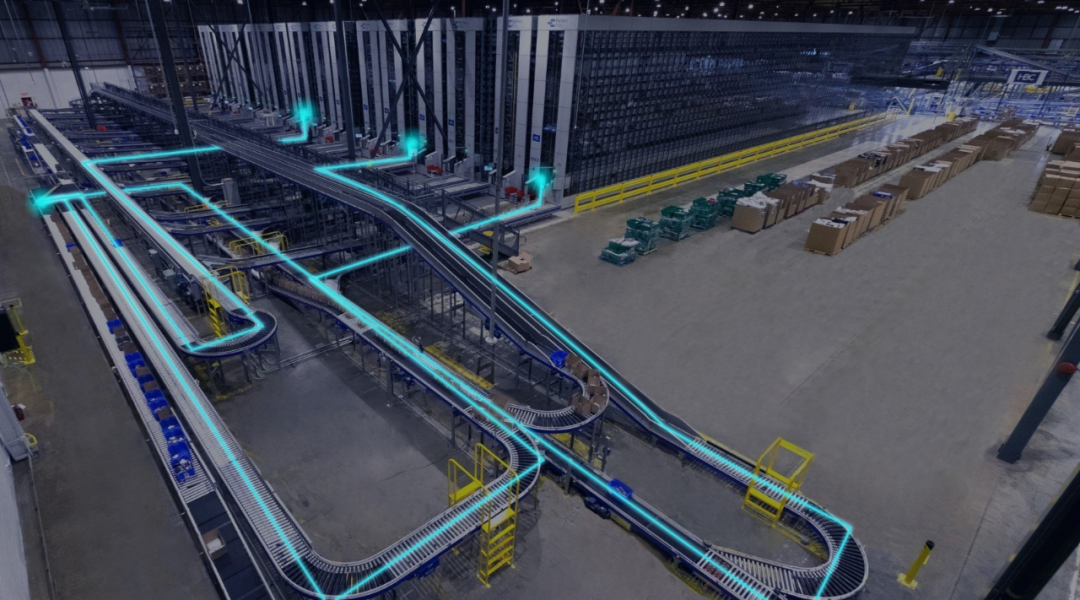
 HOME >> News >> Industry News
HOME >> News >> Industry News
In today's rapidly evolving logistics and supply chain environment, warehouse automation has become a key issue. However, the successful implementation of warehouse automation is not easy, and requires a comprehensive consideration of various factors, from data acquisition, process design, to the exploration of new technologies and strategic integration. To help you automate your warehouse more effectively, this article lists eight core tips and recommendations. These tips cover the entire automation process, including initial data analysis, operational simulation, technology selection, and how to prepare for change, and are designed to provide comprehensive and in-depth guidance for your automation project. Whether you are initially exploring automation possibilities or are already working on an automation transformation, these tips will provide you with valuable reference. Read on to discover how to make your warehouse operations smarter, more efficient and more sustainable.

Automated warehouse (Automated Warehouse) is the 1 type of warehouse that uses automation technology and equipment to perform warehousing activities. In an automated warehouse, from the receipt of goods, storage, retrieval to the warehouse, almost all operations can be completed by automated equipment and control systems. Such warehouse designs are often more complex and advanced, requiring tight integration with enterprise resource planning (ERP) systems, warehouse management systems (WMS), or other information systems.
Key features:
Efficiency: Automated equipment such as automatic forklifts, automatic handling systems, and automatic sorting systems can greatly improve the speed and accuracy of cargo processing.
Space-saving: Automated racking and storage solutions are often designed to be more compact, making more efficient use of storage space.
Reduce manpower: Automation reduces the reliance on manual operations, thereby reducing labor costs and reducing human error.
Improve accuracy: Since most operations are done by machines and sophisticated control systems, error rates are usually reduced.
Scalability: Automated warehouse systems are typically easier to scale and adapt more quickly to changing business needs.
Main components:
Automatic Storage and Retrieval System (AS/RS): Used to store and retrieve goods automatically.
Automated Guided Vehicle (AGV) or Automated Mobile Robot (AMR): Used to transport goods inside a warehouse.
Sorting system: automatically or semi-automatically sort and sort goods to different destinations.
Conveyor belt and roller conveyor system: for fast handling of goods.
Warehouse Management System (WMS): Used to control and optimize the various operations of the warehouse.
Data analysis and monitoring system: used to monitor warehouse status in real time, generate reports and optimize.
Automated warehouses are widely used in various industries, including manufacturing, retail, logistics, e-commerce, etc., especially for occasions that require high speed, high efficiency and high accuracy. Implementing an automated warehouse project requires a high degree of attention and the involvement of a professionally trained team.
Failure cases of warehousing automation occur from time to time, with some companies investing heavily but with little success. So should we stick to the traditional approach and avoid automation? The answer is no. In a rapidly evolving market environment, continuous investment in automation, digitalization and process optimization is necessary.

The core question is how to accurately implement an automation project and how to prevent potential losses due to poor design. Here are eight effective suggestions for you.
(1) Capture data
The design of each automated warehouse should be based on data on existing activities and projections of future activities. The higher the quality and detail of the data, the deeper the analysis.
At first glance, 1 seems like a lot of effort to recover this data, but it involves a lot of investment, so it's worth it.
(2) Be careful when calculating the average
When analyzing a large amount of information related to complex logistics operations, a closer calculation seems to be the fastest solution, but in fact the situation is different.
Peaks and averages should be properly assessed on an annual, monthly and daily basis: operations during the working day will not run at the same speed, but peaks and troughs will naturally be displayed. Buffers, throughput, workstations, etc. must be designed to withstand this fluctuating trend: even if these are expected on average, they may fill up with capacity multiple times a day. And you wouldn't want to work in a warehouse where the data is so inaccurate.
(3) Looking at the transaction as a whole
Logistics activities are more complex than their individual sub-businesses, which may be well designed individually but not properly integrated with each other. Improper interface planning between these sub-operations can lead to bottlenecks. Good design of the various parts is useless when the various members of the orchestra do not play at the same rhythm.
(4) Details determine success or failure
Although the overall design effect is good, but often the details determine success or failure. Buffer zones, exchange time between regions, aggregation areas: as long as one of them is designed incorrectly, a bottleneck will appear, thereby disrupting the upstream and downstream flow. Fixing these small bugs during the design phase costs very little money, but once the system is up and running, it can cause big problems, so be sure to fix them upstream.
(5) Explore different strategic scenarios
The company's strategic choices have a direct impact on operations and logistics, and growth can be achieved by expanding market share, opening new channels and markets, expanding product portfolio and even shrinking product portfolio. All of the above translates into changing operational goals: the number of orders may increase or decrease. The range of the storage unit may be enlarged or reduced. More or less daily delivery may be required.
With the help of models supported by detailed data, such scenarios can be explored in different combinations, which can ensure that the automation system is resilient and consistent with the strategic development of the business. Automation should be designed to accommodate foreseeable future business scenarios. Automation must serve operations, not the other way around.

(6) Explore new technologies
Many companies have invested in a technology because they saw it at the exhibition, or because the company next door implemented the technology, but the solution is not always suitable for them.
We live in an era of unprecedented technology availability. In principle, they all do the same thing: automate and optimize warehouse tasks. There are many models of cars, they can all go from A to B, have 4 wheels, accelerator and brake, but still cater to different markets!
The same goes for warehouse automation. Depending on the order profile, product characteristics, order line distribution, and many other factors, different technologies can behave very differently and provide significantly different added value for the same investment. Since there is no one-size-fits-all solution, proper modeling of automated logistics operations can compare different solutions in an analog-digital environment and help determine the right technology.
(7) Simulation, simulation, simulation
When approving projects, simulations are life insurance: in fact, they leave room for error in a virtual environment, where it is still possible to discard the wrong configuration without any impact and narrow the scope To the best performance scenario. In addition, 99 out of 100 simulations will pay off for two main reasons:
Simulation helps to reduce the initial investment; most companies simulate automated warehouses only after purchase to facilitate setup. What if there 1 another cheaper setup? Of course, it's best to find out before confirming a multi-million dollar project.
Simulation will save you money by fixing errors before they occur; assuming that the buffer design is not perfect, it can only be expanded by removing some fixed elements of the newly installed automation system. Fixing this error yourself will cost more money than the simulation itself.
(8) Be prepared to change
As we have already said, automation should serve operations, not the other way around. Therefore, it is necessary to change the perspective, question every process in the operation, and determine whether it brings added value or is an example of an outdated way of working.
In general, a change in perspective should occur with the implementation of an automated system, as it becomes natural to adopt a completely new approach to avoid redundant and inefficient processes and costs. Investing time in consultation allows you to look at the operation as a whole, thereby piecing together all the parts of the puzzle. Toyota Material Handling helps companies achieve operational excellence from design to implementation. If you are ready for change and want to automate your warehouse, contact our experts to explore the right solution for your company.